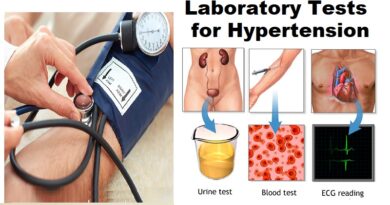Wall Sits and Planks Exercises are The Best for Lowering Blood Pressure
Wall Sits and Planks Exercises are The Best for Lowering high blood pressure which is also known as hypertension. Hypertension is a common health condition that affects millions of people worldwide. It is a significant risk factor for heart disease, stroke, and other cardiovascular complications. While medication and lifestyle changes are often prescribed to manage hypertension, recent research suggests that incorporating specific exercises into your daily routine can have a positive impact on lowering blood pressure. In this article, we will explore the findings of this study that highlights wall sits and planks as two of the best exercises for reducing blood pressure.
Understanding Hypertension and its Consequences
Before going deeper into the study’s details, let’s briefly understand hypertension and its implications on overall health. Blood pressure measures the force of blood against the walls of arteries as the heart pumps it around the body. Hypertension occurs when this force becomes consistently higher than the normal range, putting strain on the arterial walls and heart.
The consequences of uncontrolled hypertension are serious such as increasing the risk of heart attack, stroke, kidney disease, and other serious health conditions. Managing blood pressure is important for good health and well-being.
The Study About Wall Sits and Planks
Based on an extensive analysis of 270 previous studies through a systematic review and analysis, various forms of exercise have been found to be highly effective in reducing both resting systolic and diastolic blood pressure. These include aerobic exercises, dynamic resistance training, combined training, high-intensity training, and isometric exercise training. Notably, among all the modes of exercise, static isometric exercise training, which involves engaging muscles without movement (e.g., wall sits and planks), were the most effective for lowering blood pressure.
1- Wall Sits:
Wall sits are a simple isometric exercise that primarily targets the muscles of the lower body, including the quadriceps, hamstrings, and glutes. To perform a wall sit, follow these steps:
Step 1: Find a clear wall space and stand with your back against the wall.
Step 2: Slide down the wall by bending your knees until they are at a 90-degree angle as if you are sitting on an invisible chair.
Step 3: Hold this position for as long as you comfortably can, gradually increasing the duration over time.
2- Planks:
Planks are another isometric exercise that engages multiple muscle groups, particularly the core muscles, shoulders, and back. Here’s how to do a basic plank:
Step 1: Begin in a push-up position with your arms straight and palms flat on the floor.
Step 2: Lower your forearms to the ground, positioning them parallel to each other.
Step 3: Keep your body in a straight line from head to heels, engaging your core muscles throughout the exercise.
Step 4: Hold the plank position for as long as possible, gradually extending the duration as you build strength.
Results and Implications
The study found that both wall sits and planks had a significant impact on reducing blood pressure among participants with hypertension. After six weeks of regular practice, individuals experienced a notable decrease in systolic and diastolic blood pressure readings. These positive results suggest that isometric exercises like wall sits and planks can be valuable additions to blood pressure management strategies.
Benefits of Isometric Exercises for Blood Pressure Reduction
- Muscle Activation:
Isometric exercises involve holding a static position without joint movement. These exercises activate a higher number of motor units in the targeted muscles, leading to increased muscle strength and improved blood flow. - Cardiovascular Health:
Wall sits and planks put moderate stress on the cardiovascular system, stimulating the heart to pump more blood. Over time, this can enhance heart function and efficiency. - Stress Reduction:
Regular physical activity has been shown to reduce stress and anxiety, contributing to lower blood pressure levels. Isometric exercises can also serve as a form of meditation, promoting mental well-being. - Accessibility and Convenience:
Wall sits and planks require minimal equipment and can be performed at home, making them accessible to individuals with various fitness levels and time constraints.
SUMMARY
Hypertension is a serious health concern that demands attention and management. While medication and lifestyle changes are essential components of hypertension treatment, incorporating regular exercise is increasingly recognized as a complementary approach.
The study’s findings highlight the potential benefits of wall sits and planks in lowering blood pressure and improving overall cardiovascular health. Incorporating wall sits and planks into your fitness routine is not a standalone solution, but when combined with a healthy lifestyle and medical management, they can play a significant role in achieving optimal blood pressure levels and contributing to long-term well-being.
Before starting any exercise program, especially if you have hypertension or any other medical condition, you have to consult with a specialist to provide guidance and to ensure that the chosen exercises are safe and suitable for your needs.
- Read More:
- Blood Pressure Measurement: A Complete Guide for Filipino Caregivers and Healthcare Students
- Kidney Health and Blood Pressure — How They Affect Each Other
- Hypertension Laboratory Tests for Managing High Blood Pressure
If you have questions, you can drop them below in the comment section. You can contact us here: Google page, or Facebook page. We offer quick and convenient testing options.




